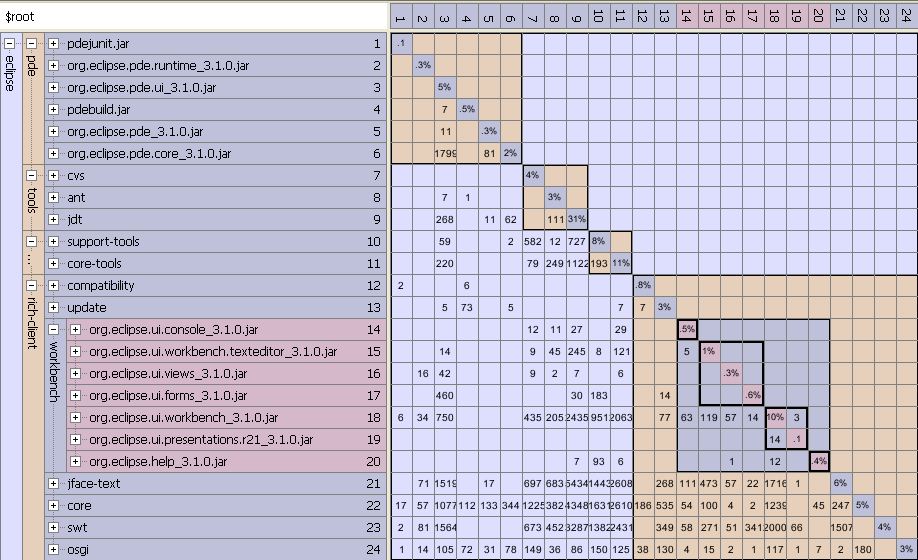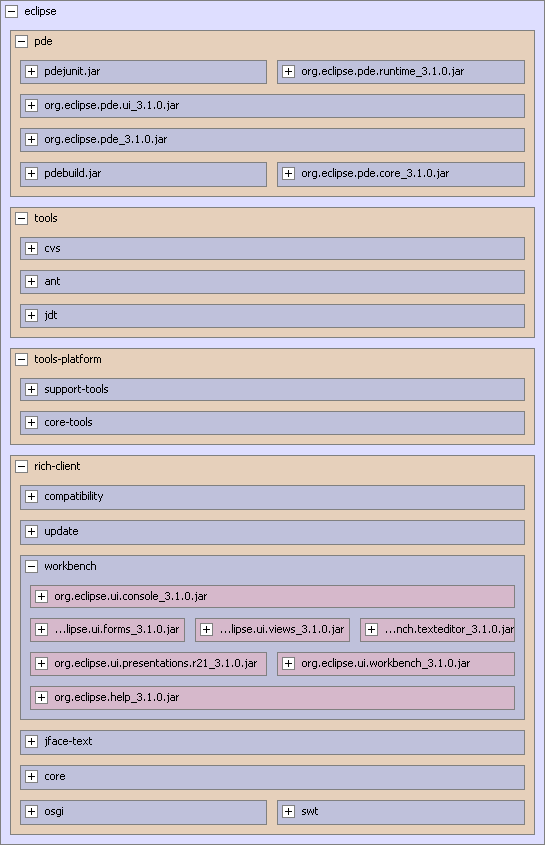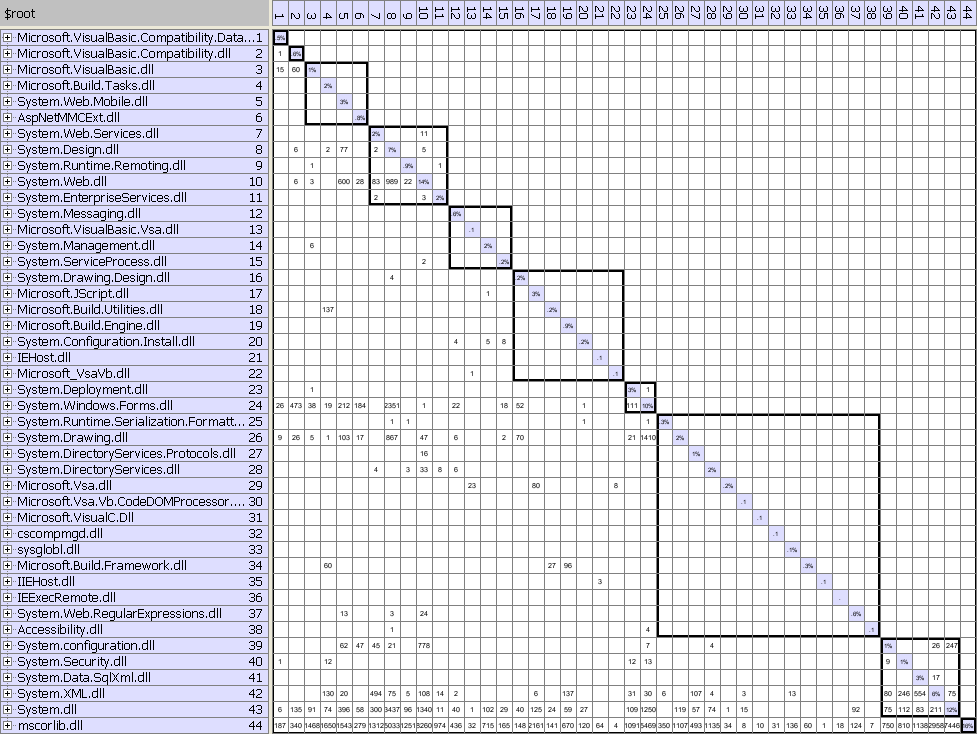Architecture Discovery#
Scalable Visualization#
Unlike, most other approaches that are rooted in box and arrow diagrams, Lattix uses two primary forms of display: Dependency Structure Matrix (DSM) and a Conceptual Architecture Diagram (a box-in-a-box diagram) to visualize architecture.
Lattix has been used to visualize Java and .NET systems with more than 100,000 classes and C/C++ systems with more than 10 million lines of code. It has also been used to visualize massive database systems. The Conceptual Architecture display is easy to use & understand and forms a powerful companion to DSMs.
Powerful Algorithm Support#
Use more than ten different partitioning algorithms to layer, cluster and group the elements of your system to discover an organization that represents the desired architecture. Whether the system you are analyzing is large or small, sparse or dense, code or data, process or component, Lattix algorithms have been found to be useful in a variety of scenarios.
Complete Flexibility in Reorganization#
Lattix aids architecture discovery by allowing you to change the current organization to one that accurately represents the design intent. The ability to create new abstractions, remove current abstractions or mix and merge abstractions in a flexible way lets you experiment with different organizations and come up with one that best represents the desired result.
Identify Bad Dependencies#
Quickly identify bad dependencies that have come about as a result or architectural erosion or coding mistakes. These can include undesirable cyclic dependencies, dependencies that violate desired modularization, or dependencies resulting from poorly implemented abstractions.




